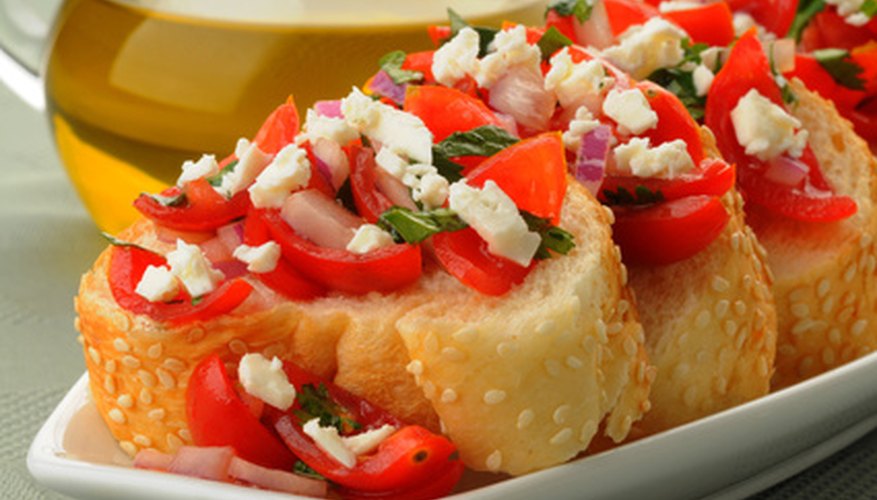A family favourite, rich, savoury lasagne presents challenges to the cook that go beyond constructing the dish. For instance--what can you serve with lasagne that will hold its own without being too heavy? Here are a few suggestions.
Lasagne
In its classic incarnation, lasagne is an Italian masterpiece, composed of meat sauce, mozzarella, ricotta and Parmesan cheeses, and wide, curly-edged noodles layered into a shallow pan and then baked until browned and bubbly. Though some cooks have created versions that break this pattern, meat lasagne almost by definition is a heavy dish. Coming up with side dishes to accompany it can challenge a cook's imagination.
Side Dish Boredom
The obvious, and ubiquitous, solutions to this dilemma are a mixed green salad and bread. Certainly nothing could be easier, or, ultimately, more boring. If we use those general ideas as a starting point, however, we can arrive at some unusual and delicious alternatives.
Three Salads
For a genuinely Italian meal, try Marcella Hazen's argula and fennel salad. The spiciness of the arugula contrasts nicely with the light, liquorice-tasting fennel. To make this salad, Hazen directs the cook to trim the arugula, to wash and trim the fennel and slice it very thinly, and then to toss the mixture with just a little first-quality olive oil, lemon juice and salt and pepper.
A stripped-down version of an antipasto salad could also make a refreshing accompaniment. Antipasto platters usually include cold meats and cheeses, but a bowl of marinated artichoke hearts, roasted red peppers strips and black oil-cured olives, stirred together with a very light vinaigrette, would help cut through the rich flavours of the lasagne.
Another, even simpler, possibility is a frisée salad, composed of washed and chopped curly endive leaves dressed with a fairly sharp, lemony vinaigrette. The slight bitterness of the greens and the dressing will provide a nice counterpoint to the richness of the pasta dish.
- For a genuinely Italian meal, try Marcella Hazen's argula and fennel salad.
- Another, even simpler, possibility is a frisée salad, composed of washed and chopped curly endive leaves dressed with a fairly sharp, lemony vinaigrette.
Breads
Bruschetta is simply good-quality French or Italian bread, sliced into fairly substantial chunks, grilled or broiled till golden, and then rubbed with fresh garlic and brushed with olive oil. In this plainest of dressings, bruschetta pairs naturally with rich dishes like lasagne.
You can, however, fancy bruschetta up a little bit. Because most lasagnes absolutely bulge with cheeses, adding cheese to the bruschetta might make it too heavy, but there's no reason you couldn't top it with some very finely minced fresh basil leaves, to point up the tomato flavours of the meat sauce.
- Bruschetta is simply good-quality French or Italian bread, sliced into fairly substantial chunks, grilled or broiled till golden, and then rubbed with fresh garlic and brushed with olive oil.
- Because most lasagnes absolutely bulge with cheeses, adding cheese to the bruschetta might make it too heavy, but there's no reason you couldn't top it with some very finely minced fresh basil leaves, to point up the tomato flavours of the meat sauce.
Good old American garlic bread, which many of our mothers used to buy ready-made in a foil pouch at the grocery store, can also be a good partner for your lasagne, provided you clean up its act a little. Start by mixing a third of a cup of softened butter with three finely chopped cloves of fresh garlic. Then slice a loaf of good French or Italian bread into ½-inch slices, smear each slice lightly on both sides with the butter mixture, wrap the loaf in aluminium foil, and put it in a 350 degree oven to warm thoroughly. If you time the preparation right, you can put the bread in at the same time that you take the lasagne out. The pasta dish needs to stand for a few minutes before you cut it, so it will firm up. By the time it's ready to serve, the bread will be, also.
